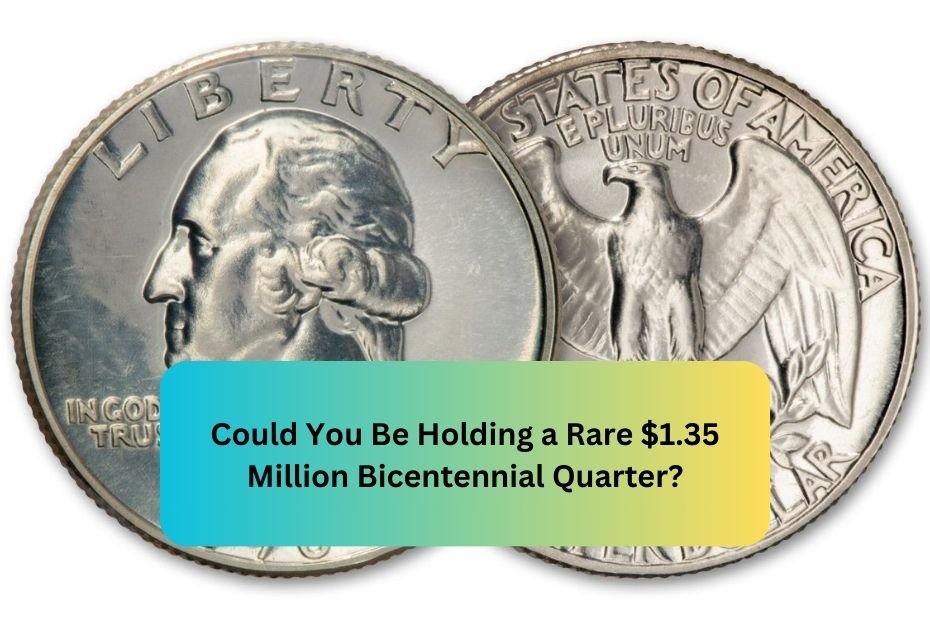The 1976 Bicentennial Quarter is a coin that holds a special place in the hearts of collectors and casual coin enthusiasts alike. While it may appear to be just another piece of pocket change, certain variations of this quarter can fetch staggering amounts, with some reaching a mind-blowing $1.35 million! This article delves into what makes the Bicentennial Quarter so unique, the factors that contribute to its value, and how to identify whether you might have one of these rare coins.
A Brief History of the Bicentennial Quarter
In 1976, the United States celebrated its 200th anniversary, also known as the Bicentennial. To commemorate this significant occasion, the U.S. Mint issued special designs for various denominations, including the quarter. The design features the profile of George Washington on the obverse (front) side, surrounded by the words “Liberty” and “In God We Trust.” The reverse (back) side showcases a depiction of the drummer from the American Revolution, symbolizing the fight for independence.
This special design was a departure from the traditional quarters minted in previous years and became a staple in American coinage during the mid-1970s. However, as time went on, some of these coins became much more than mere collectibles.
The Value of the Bicentennial Quarter
Most Bicentennial Quarters minted in 1976 are worth only 25 cents. However, certain variations and conditions can significantly increase their value. Here are a few factors that can make a Bicentennial Quarter worth thousands or even millions:
1. Uncirculated Condition
The condition of a coin is crucial to its value. Coins that have been in circulation often bear scratches, dents, and other imperfections. In contrast, uncirculated coins, which have never been used as currency, are often more valuable. A perfect specimen can command higher prices among collectors.
2. Varieties and Errors
While most Bicentennial Quarters appear quite similar, some have unique features that make them rare. These include:
- Doubled Die Variety: This occurs when the coin is struck more than once, leading to a doubling effect on certain elements of the design. A well-known example is the 1976 Doubled Die Quarter, which can be worth thousands of dollars.
- Type I vs. Type II: The Bicentennial Quarter was minted in two varieties: Type I features a smooth edge, while Type II has a more pronounced “drum” design on the reverse. Type II coins are generally considered more valuable.
3. Grading
Coins are graded on a scale from 1 to 70, with 70 being a perfect coin. The higher the grade, the more valuable the coin is. Coins in excellent condition, graded MS-65 or higher, can see substantial price increases, particularly among rare varieties.
Identifying a Rare Bicentennial Quarter
If you suspect you might have a rare Bicentennial Quarter, here’s how to identify it:
1. Examine the Date and Mint Mark
Check the date on the coin. The Bicentennial Quarter has the date “1776-1976” inscribed. Look for the mint mark, which can be found just below the “E” in “Liberty.” If the mint mark is an “S,” it indicates that the coin was minted in San Francisco, which can increase its value.
2. Inspect for Errors
Look closely for signs of doubling. Use a magnifying glass to examine the lettering and images. If you notice that the details appear to be duplicated, you might have a valuable Doubled Die Quarter.
3. Get it Graded
For an accurate assessment of your coin’s value, consider having it graded by a professional coin grading service. They can provide a clear picture of its condition and rarity, which will help in determining its market value.
Market Demand and Sales
The demand for rare coins can fluctuate based on various factors, including collector interest and market trends. Websites and auction houses often list rare coins for sale, and some notable sales of Bicentennial Quarters have made headlines. In 2021, a 1976-S Doubled Die Quarter sold for an astonishing $1.35 million, highlighting just how lucrative rare coins can be.
Caring for Your Coins
If you believe you have a rare Bicentennial Quarter, it’s essential to take care of it properly:
- Store It Safely: Keep your coins in a protective holder, away from moisture and extreme temperatures.
- Avoid Cleaning: Cleaning coins can damage their surface and lower their value. Handle them with care and store them as they are.
Conclusion
While most people may pass by their pocket change without a second thought, the possibility of holding a rare Bicentennial Quarter worth $1.35 million is certainly enticing. By understanding what makes certain coins valuable, you can better appreciate the potential treasures hiding in your collection. Always remember to inspect your coins carefully and consider professional grading if you believe you might have something special. Who knows? You could be sitting on a small fortune!
FAQs
- What is the average value of a standard 1976 Bicentennial Quarter?
- Most standard 1976 Bicentennial Quarters are worth 25 cents, but rare varieties can fetch much higher prices.
- How can I tell if my Bicentennial Quarter is rare?
- Check for unique features like doubling, mint marks, and overall condition. A professional grading service can provide an accurate assessment.
- What is a Doubled Die Quarter?
- A Doubled Die Quarter is a coin that shows a doubling effect on its design due to being struck multiple times, making it rare and valuable.
- Where can I sell my rare Bicentennial Quarter?
- You can sell rare coins through auction houses, coin dealers, or online marketplaces dedicated to coin collecting.
- How should I store my valuable coins?
- Store your coins in protective holders and avoid cleaning them to maintain their value. Keep them in a cool, dry place away from direct sunlight.

